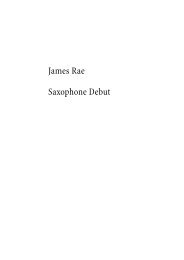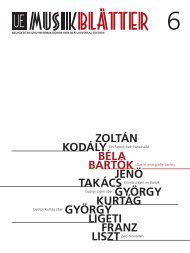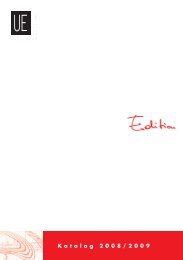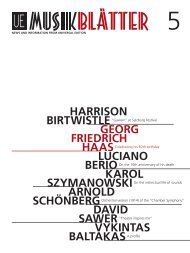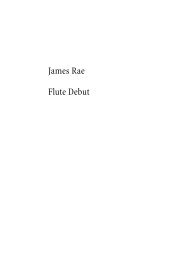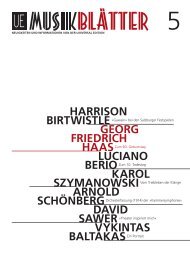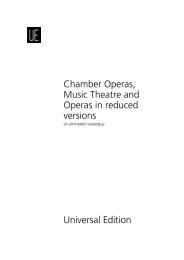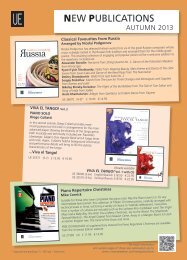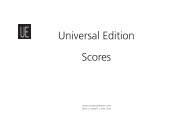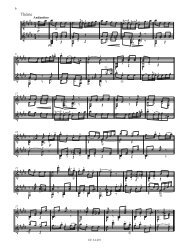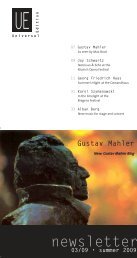Luciano Berio - Universal Edition
Luciano Berio - Universal Edition
Luciano Berio - Universal Edition
Create successful ePaper yourself
Turn your PDF publications into a flip-book with our unique Google optimized e-Paper software.
The Past as Future: <strong>Luciano</strong> <strong>Berio</strong><br />
In the aftermath of the Second World War, many composers of <strong>Luciano</strong> <strong>Berio</strong>’s generation<br />
felt obliged to wipe the slate clean. To a composer with roots as deep in the achievements<br />
of the past four centuries as <strong>Berio</strong>, this was never an option. His work constantly re-invented<br />
continuities where others saw only the possibilities of rupture. Not that he was ever tempted<br />
by the assorted nostalgias that haunted some part of the music of the last century. On the<br />
contrary, he maintained an insatiable curiosity about the explorations of his contemporaries<br />
– musical or otherwise. But his dialogues with literature, with linguistics, with structural<br />
anthropology, with ethnomusicology always proved to be the most inventive of piratical raids<br />
– seizing the materials that he needed as a musician, and drawing from them creative<br />
consequences often far removed from their original context. They are a fraternal “homage”, not<br />
an imitation. Beyond his apprentice years of the late forties and early fifties, much the same<br />
might be said of his response to his musical contemporaries. His oblique relationship to the<br />
post-Webernian mainstream was the first instance of a trait that has remained central to his<br />
work ever since. Seizing with relish upon its demonstrations of inexhaustible metamorphic<br />
potential, he expanded this into a basic principle: you may always re-write what is already<br />
written.<br />
The exuberant melodic confidence of his work from the late fifties and sixties – whether the<br />
nervous brilliance of the flute Sequenza I, or the by now classic lyrical intensity of works<br />
written for Cathy Berberian, such as Circles or Sequenza III – bears witness to the confident<br />
authority with which he grasped these means. Equally, the series of Chemins that revisit solo<br />
Sequenzas demonstrate not just a Joycean “work in progress”, but our obligation to treat each<br />
completed work as a “listening in progress”. But the sixties also saw the first indices of an<br />
unwillingness to side-line issues central to his rigorous sense of musical tradition. Where some<br />
contemporaries seemed content to treat harmony as simply a subcategory of “texture”, <strong>Berio</strong><br />
insistently returned to the harmonic dimension as central to his larger musical aspirations.<br />
Training his own and his listeners’ ears to find their way through the harmonic jungle was at<br />
first a matter of brilliantly alert intuition – in, for instance, Sequenza IV for piano – but was<br />
soon absorbed into a focussed framework, first in O King, but then in many subsequent works<br />
of the early seventies, by exploring the consequences of harmonic projections from a line. The<br />
fruits of this patient process of exploration came in the major works of the eighties and<br />
nineties, where harmony resumed its rights as the organising force behind such major theatre<br />
works as La vera storia, Un re in ascolto, and Outis, but could equally determine the masterly<br />
concision of Sequenza XIII for accordion.<br />
Although <strong>Berio</strong> drew admiration in the late fifties as an exuberant explorer of electronic<br />
resources, his vivid empathy for the risks and rewards of live performance tended to gain the<br />
about his music<br />
5



